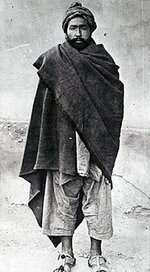Crow
Silver Member
- Jan 28, 2005
- 3,725
- 10,361
- Detector(s) used
- ONES THAT GO BEEP! :-)
- Primary Interest:
- Other
Okay TT ya been good
So heres ya yarn TT asked for.....
Gee between you IPIC, Doc, Don Jose, among others ya just about forced old crow to squawk until his beak falls off. You guys are slave drivers.
You guys are slave drivers.
Here I am instead of me flapping my wings here siting getting unfit typing out yarns. When I should be outside stretching those wings.....
So gather round with a beer or a coffee for a yarn dedicated to all the brave men and women of the coalition forces who served and still serve in Afghanistan. The following treasure yarn is about the legendary Treasure of Ahamad Shah Abdali
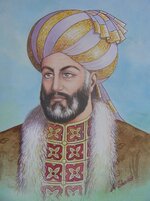
Although the names of Timur, Genghis Khan, and Mahmud of Ghazni are well-known for the destruction they wrought in South and Central Asia, the name of the founder of the Afghan nation-state is relatively unknown to Westerners, though Ahmad Shah created an Afghan empire that, at its largest in the 176Os,
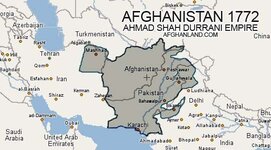
The empire as you can see in the map above shows the empire extended from Central Asia to Delhi and from Kashmir to the Arabian Sea. There have been greater conquerors in the region before and since Ahmad Shah, but never before his reign and rarely since has there been a ruler of this fragmented area capable not only of subduing the truculent Afghan tribes but also of pulling them together into a nation.
The treasure of Ahmad Shah is often considered to be the greatest ‘lost treasure’ in history? It has be claimed that there is a mountain of gold and jewels reputed to be worth in excess of $530 billion. In 1740 Nadar Sahar of Persia swept through Afghanistan into India. After sacking its capital at Delhi , he plundered the treasuries of the fabulously rich Mughal Emperors and hauled the wealth of three hundred years westward, over the Hindu Kush towards his kingdom of Persia. The treasure caravan was said to have been 150 miles long, and to have contained the greatest accumulation of gold and gems in human history.[SUP]
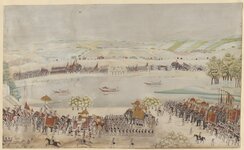
[/SUP]Ahmad Shah died an agonizing death soon after, succumbing to cancer of the face. Legend has it that his death was the result of the curse of the Koh-i-noor diamond. With the knowledge that his health was deteriorating, Ahmad Shah is said to have concealed the bulk of the treasure before his death. For almost two and a half centuries, Afghans and their rulers have searched for the treasure of Ahmad Shah. A century ago Amir Abdur Rahman, sent convicts to hunt in the dangerous tunnels commonly found in the region. Most of them perished.
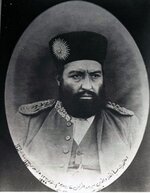
The British mounted their own quest for the treasure, as did the Russians during the 1980s. More recently, It has been claimed that Al Qaeda and the Tailban henchmen have been thought to be looking For it. In 2007 travel writer and explorer Tahir Shah heads off to Afghanistan on a quest to find the hidden treasure of Ahamad Shah Abdali and made a documentary about his search.
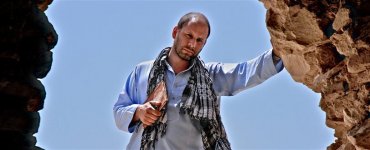
That was was almost downright suicidal in him being shot at by the Taliban. Tahir Shah's family lived in Afghanistan for more than a thousand years as rulers, warriors, and mystics. Shah shares the same name as the first king, as well as a common ancestry. His father, Idries shah , was Afghanistan's most famous writer of modern times, and was also preoccupied with the fabulous lost treasure. His own fascination for riddle led him to write a bestselling novel about the gold of Ahmad Shah.
He believes he knows the location of this immense historical treasure in the North west of Kabul. In a valley called.....
To be continued.....
Crow
So heres ya yarn TT asked for.....
Gee between you IPIC, Doc, Don Jose, among others ya just about forced old crow to squawk until his beak falls off.
 You guys are slave drivers.
You guys are slave drivers.
Here I am instead of me flapping my wings here siting getting unfit typing out yarns. When I should be outside stretching those wings.....
So gather round with a beer or a coffee for a yarn dedicated to all the brave men and women of the coalition forces who served and still serve in Afghanistan. The following treasure yarn is about the legendary Treasure of Ahamad Shah Abdali

Although the names of Timur, Genghis Khan, and Mahmud of Ghazni are well-known for the destruction they wrought in South and Central Asia, the name of the founder of the Afghan nation-state is relatively unknown to Westerners, though Ahmad Shah created an Afghan empire that, at its largest in the 176Os,

The empire as you can see in the map above shows the empire extended from Central Asia to Delhi and from Kashmir to the Arabian Sea. There have been greater conquerors in the region before and since Ahmad Shah, but never before his reign and rarely since has there been a ruler of this fragmented area capable not only of subduing the truculent Afghan tribes but also of pulling them together into a nation.
The treasure of Ahmad Shah is often considered to be the greatest ‘lost treasure’ in history? It has be claimed that there is a mountain of gold and jewels reputed to be worth in excess of $530 billion. In 1740 Nadar Sahar of Persia swept through Afghanistan into India. After sacking its capital at Delhi , he plundered the treasuries of the fabulously rich Mughal Emperors and hauled the wealth of three hundred years westward, over the Hindu Kush towards his kingdom of Persia. The treasure caravan was said to have been 150 miles long, and to have contained the greatest accumulation of gold and gems in human history.[SUP]

[/SUP]Ahmad Shah died an agonizing death soon after, succumbing to cancer of the face. Legend has it that his death was the result of the curse of the Koh-i-noor diamond. With the knowledge that his health was deteriorating, Ahmad Shah is said to have concealed the bulk of the treasure before his death. For almost two and a half centuries, Afghans and their rulers have searched for the treasure of Ahmad Shah. A century ago Amir Abdur Rahman, sent convicts to hunt in the dangerous tunnels commonly found in the region. Most of them perished.

The British mounted their own quest for the treasure, as did the Russians during the 1980s. More recently, It has been claimed that Al Qaeda and the Tailban henchmen have been thought to be looking For it. In 2007 travel writer and explorer Tahir Shah heads off to Afghanistan on a quest to find the hidden treasure of Ahamad Shah Abdali and made a documentary about his search.

That was was almost downright suicidal in him being shot at by the Taliban. Tahir Shah's family lived in Afghanistan for more than a thousand years as rulers, warriors, and mystics. Shah shares the same name as the first king, as well as a common ancestry. His father, Idries shah , was Afghanistan's most famous writer of modern times, and was also preoccupied with the fabulous lost treasure. His own fascination for riddle led him to write a bestselling novel about the gold of Ahmad Shah.
He believes he knows the location of this immense historical treasure in the North west of Kabul. In a valley called.....
To be continued.....
Crow


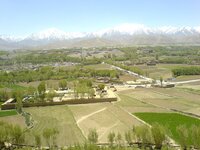
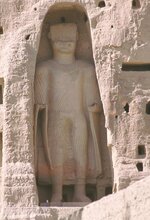
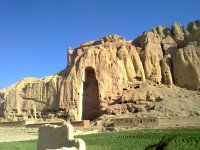
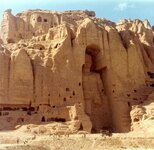
 ??
??